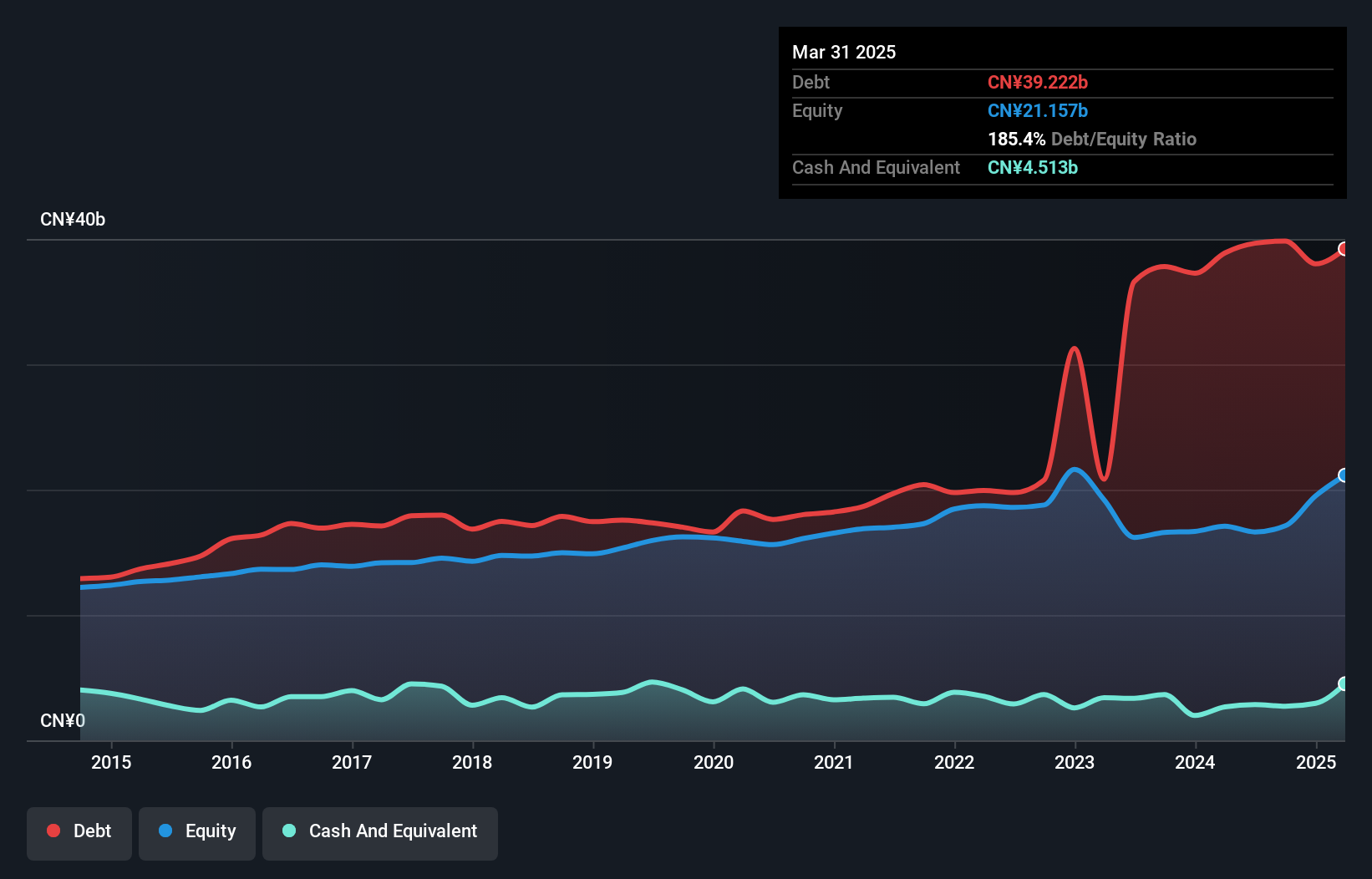Warren Buffett famously said, 'Volatility is far from synonymous with risk.' So it might be obvious that you need to consider debt, when you think about how risky any given stock is, because too much debt can sink a company. We note that Sichuan Expressway Company Limited (HKG:107) does have debt on its balance sheet. But the real question is whether this debt is making the company risky.
What Risk Does Debt Bring?
Debt is a tool to help businesses grow, but if a business is incapable of paying off its lenders, then it exists at their mercy. Ultimately, if the company can't fulfill its legal obligations to repay debt, shareholders could walk away with nothing. However, a more usual (but still expensive) situation is where a company must dilute shareholders at a cheap share price simply to get debt under control. Of course, the upside of debt is that it often represents cheap capital, especially when it replaces dilution in a company with the ability to reinvest at high rates of return. The first thing to do when considering how much debt a business uses is to look at its cash and debt together.
What Is Sichuan Expressway's Net Debt?
As you can see below, Sichuan Expressway had CN¥39.2b of debt, at March 2025, which is about the same as the year before. You can click the chart for greater detail. However, because it has a cash reserve of CN¥4.51b, its net debt is less, at about CN¥34.7b.

A Look At Sichuan Expressway's Liabilities
According to the last reported balance sheet, Sichuan Expressway had liabilities of CN¥4.40b due within 12 months, and liabilities of CN¥37.8b due beyond 12 months. Offsetting these obligations, it had cash of CN¥4.51b as well as receivables valued at CN¥836.1m due within 12 months. So it has liabilities totalling CN¥36.9b more than its cash and near-term receivables, combined.
The deficiency here weighs heavily on the CN¥17.2b company itself, as if a child were struggling under the weight of an enormous back-pack full of books, his sports gear, and a trumpet. So we'd watch its balance sheet closely, without a doubt. After all, Sichuan Expressway would likely require a major re-capitalisation if it had to pay its creditors today.
View our latest analysis for Sichuan Expressway
We measure a company's debt load relative to its earnings power by looking at its net debt divided by its earnings before interest, tax, depreciation, and amortization (EBITDA) and by calculating how easily its earnings before interest and tax (EBIT) cover its interest expense (interest cover). Thus we consider debt relative to earnings both with and without depreciation and amortization expenses.
Sichuan Expressway has a rather high debt to EBITDA ratio of 9.0 which suggests a meaningful debt load. But the good news is that it boasts fairly comforting interest cover of 3.7 times, suggesting it can responsibly service its obligations. However, one redeeming factor is that Sichuan Expressway grew its EBIT at 15% over the last 12 months, boosting its ability to handle its debt. When analysing debt levels, the balance sheet is the obvious place to start. But it is Sichuan Expressway's earnings that will influence how the balance sheet holds up in the future. So if you're keen to discover more about its earnings, it might be worth checking out this graph of its long term earnings trend.
Finally, a business needs free cash flow to pay off debt; accounting profits just don't cut it. So it's worth checking how much of that EBIT is backed by free cash flow. During the last three years, Sichuan Expressway burned a lot of cash. While investors are no doubt expecting a reversal of that situation in due course, it clearly does mean its use of debt is more risky.
Our View
On the face of it, Sichuan Expressway's conversion of EBIT to free cash flow left us tentative about the stock, and its level of total liabilities was no more enticing than the one empty restaurant on the busiest night of the year. But at least it's pretty decent at growing its EBIT; that's encouraging. We should also note that Infrastructure industry companies like Sichuan Expressway commonly do use debt without problems. Overall, it seems to us that Sichuan Expressway's balance sheet is really quite a risk to the business. For this reason we're pretty cautious about the stock, and we think shareholders should keep a close eye on its liquidity. When analysing debt levels, the balance sheet is the obvious place to start. But ultimately, every company can contain risks that exist outside of the balance sheet. Be aware that Sichuan Expressway is showing 2 warning signs in our investment analysis , and 1 of those shouldn't be ignored...
Of course, if you're the type of investor who prefers buying stocks without the burden of debt, then don't hesitate to discover our exclusive list of net cash growth stocks, today.
New: Manage All Your Stock Portfolios in One Place
We've created the ultimate portfolio companion for stock investors, and it's free.
• Connect an unlimited number of Portfolios and see your total in one currency
• Be alerted to new Warning Signs or Risks via email or mobile
• Track the Fair Value of your stocks
Have feedback on this article? Concerned about the content? Get in touch with us directly. Alternatively, email editorial-team (at) simplywallst.com.
This article by Simply Wall St is general in nature. We provide commentary based on historical data and analyst forecasts only using an unbiased methodology and our articles are not intended to be financial advice. It does not constitute a recommendation to buy or sell any stock, and does not take account of your objectives, or your financial situation. We aim to bring you long-term focused analysis driven by fundamental data. Note that our analysis may not factor in the latest price-sensitive company announcements or qualitative material. Simply Wall St has no position in any stocks mentioned.
About SEHK:107
Sichuan Expressway
Engages in the investment, construction, operation, and management of expressway projects in Sichuan Province, the People’s Republic of China.
Solid track record average dividend payer.
Market Insights
Community Narratives



